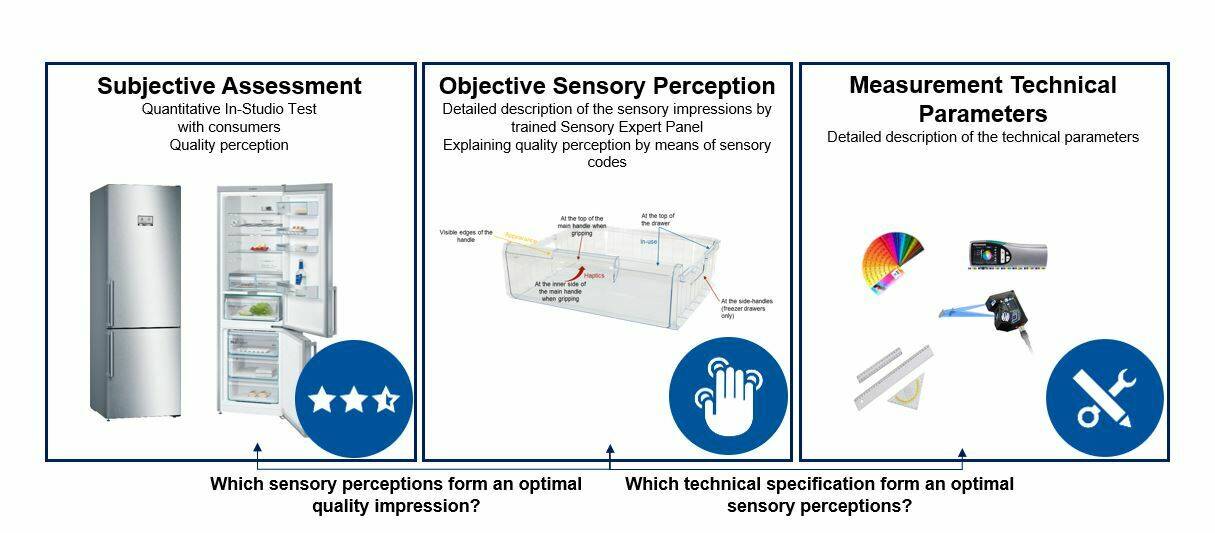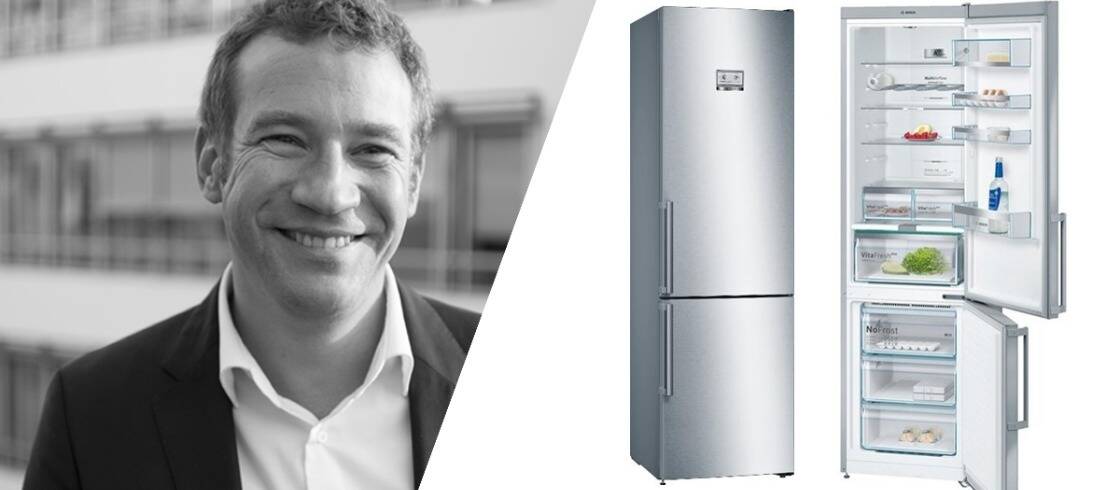The secret language of products
Greater or lesser force needed to open the door? Clear or muffled noises when pulling out the drawers? The wealth of features and design elements for our BSH refrigerators is endless – just like the different consumer needs and tastes. To combine these in the best possible way, we test them together with our consumers and thus decode the secret language of products. An interview with Joachim Pelz from Corporate Consumer Intelligence.
The importance and usage of home appliances have increased significantly over the course of the pandemic. This can be seen not only in rising sales figures on the market but also in the usage data of the appliances. “It is hardly surprising, for example, that refrigerators have been opened significantly more frequently in the last year, as we know from the Home Connect data,” explains Joachim Pelz from Corporate Consumer Intelligence. And anyone who makes more intensive use of their home appliances also thinks more often about whether the performance and quality are right. “While I don’t even notice the noisy defrosting of the fridge-freezer during the day when I’m working at the office, for example, it really annoys me when I’m taking a conference call while I’m working from home,” Pelz goes on to say. These and other attributes of our home appliances have occupied the BSH developers and designers in all product divisions for many years. Even seemingly trivial attributes, like noises during the defrosting process, can have a decisive influence on how the quality of our products is perceived.
In order to bring a smile to consumers’ faces throughout the entire consumer journey, Pelz and his team devoted themselves to the various features and design elements of refrigerators. During the “Perceived Quality Clinic” for Refrigerators, the following questions had to be answered: How can we further improve the daily interactions between our consumers and our refrigerators? How can the experience of opening and closing a refrigerator be described? And how should the use of drawers be modeled, in order to improve it from a consumer perspective?

Testing the user experience during a pandemic
Normally, the developer teams invite a group of consumers to a local user experience laboratory to observe their use of the appliances and ask them questions. However, this kind of test has no longer been possible for quite some time due to the pandemic. And testing these questions virtually on the screen was not an option either, according to Pelz. Direct interaction with the appliances was an indispensable factor for the success of the project. “It’s crucial for the products to be experienced with all the senses in order to record and decipher the explicit and implicit perception processes,” explains Pelz. “Only then can we unlock the ‘secret language’ of the products and translate it objectively and intelligibly for our marketing teams, designers, and engineers.”
To achieve that, the investigation team completely redesigned the live test. The key basics: A sophisticated hygiene concept and greater flexibility in terms of time to respond to changing infection rates. Instead of having three test subjects assess the appliances in one room, the team divided the appliances between three rooms in Göttingen. The assessments by a sensory panel, which usually take place in a group setting, were carried out by the team in a series of individual sessions with trained sensory experts. “Although the tests took almost three times as long, we obtained very valuable results for our product specification,” Pelz stresses. For example, the project team identified the drivers of perceived quality when opening and closing refrigerator doors and 48 keywords to describe refrigerator drawers – an important basis for unlocking the language of the products. The team also used the consumer test to compare the user-friendliness of current BSH series models with a number of competitor products and obtain initial feedback on prototypes of planned models.
“I am really proud of how well our products did here, and that we were able to learn a lot for the improvement of other projects at the same time.” — Joachim Pelz, Corporate Consumer Intelligence.
Next steps
The next step is to translate the individual requirements of the consumers and their sensory experiences into technical product specifications, as they form the central basis for consumer-centric enhancement of our product portfolio.




